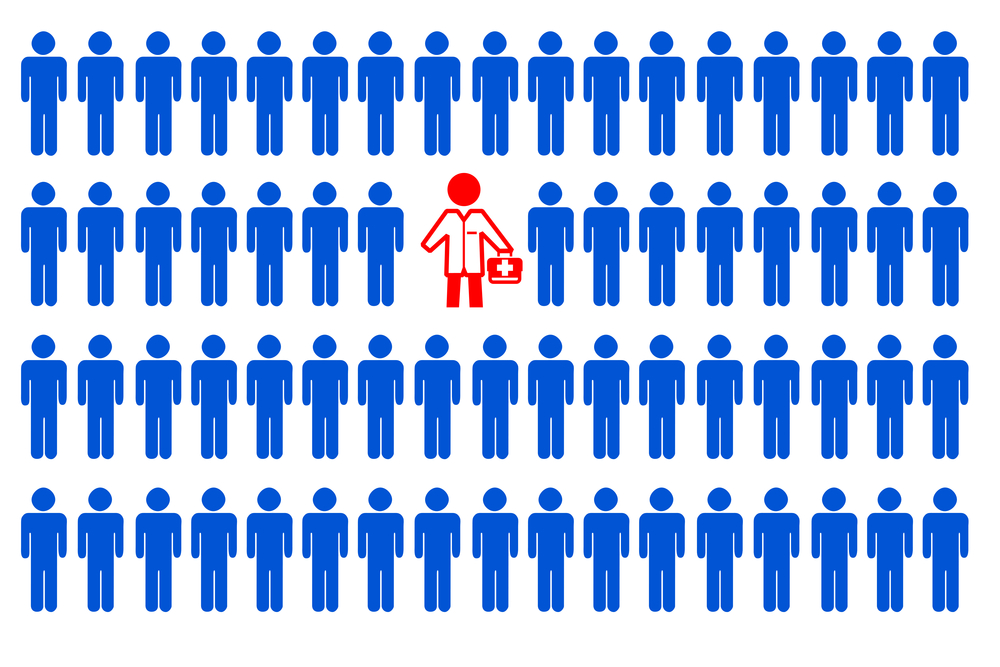The doctor to people ratio in the country has improved to around 200 per 100,000 people at present, as per the latest official statistics. The population now stands at 80 million.
Proportion of physicians to population is among the criteria of a nation’s development in the health sector. Data on health worker (physicians, nurses and midwives, and community health workers) density show the availability of medical personnel.
But despite the improvement, Iran’s health system faces a big shortage of specialized staff in several medical fields. As such, training human resources has been a priority of the Health Ministry, Salamat News reported.
The World Health Organization estimates that at least 2.5 physicians, nurses, and midwives per 1,000 people are needed to provide adequate coverage with primary care interventions associated with achieving the Millennium Development Goals.
Official statistics show that medical university admissions have increased by 11% during the present government’s tenure that began in August 2013.
“However, it is essential that medical students specialize in majors that we critically need,” said Ali Maher, treatment technical and planning deputy at the ministry.
“The health system suffers acute shortage of specialists in orthopedics, anesthesia, neurosurgery, ophthalmology, radiology, gynecology, otolaryngology and general surgery,” he noted.
In spite of the slight increase in the number of specialists in these fields in recent years, the shortage of physicians is still a major challenge.
Based on 2015 figures, there are 375 orthopedists, 577 anesthesia technicians and 257 neurosurgeons in the country while the number was 59, 175, and 35 respectively a few years ago.
“Training staff in these specialties is not feasible in the short run, so one cannot expect the nation to become self-sufficient within a few years,” the official noted.
Certain specialties face “semi-critical” conditions such as pathology, neuropsychiatry, cardiology, dermatology, internal medicine, urology, geriatrics, pediatrics and emergency medicine.
In other majors such as infectious diseases, nuclear medicine, radiotherapy and psychology, the number of doctors correspond with demand.
Based on the latest data from the WHO, Cuba, Belarus, Greece, Italy, Russia and Belgium have the best ratio with one doctor for between 160 and 263 patients (380 to 625 doctors per 100,000 population), while it is one for around 5,000 (20 doctors per 100,000 population) people in countries like Malawi, Tanzania, Liberia and Mozambique.
Health System Satisfactory
Although a long way from the standards of many developed countries, Iran’s physician-per-people ratio is favorable compared with regional countries, Maher said.
“Besides, each nation’s standards must be assessed according to the structure of its own health system [whether tax-based or state-funded] and one model cannot be a global ideal.”
In addition, human resources and investments tend to be concentrated in urban areas, so the figures per capita may give a distorted picture (of the ratio of health personnel for the entire population).
Last month, Health Minister Seyed Hassan Qazizadeh Hashemi had said there is deficit of medical specialists in the country. Currently, there are about 48 specialists per 100,000 population while the figure on average is 320 specialists in European countries.
Earlier, Mohammad Aghajani, deputy minister of health for treatment had also said there is a shortage of specialists in neurosurgery, radiology, and orthopedics.
According to Iran Medical Council, there are 78,000 general practitioners (GPs), 36,000 specialists, 24,000 general dentists, 2,000 dental specialists, 36,000 midwives, and 15,000 physiotherapists, nutritionists, optometrists, and audiologists. Almost 40% of all physicians work in Tehran Province.
In November last, 2,000 specialists in 27 different medical fields were dispensed across 580 state-run hospitals in 378 cities. Currently, most of the specialists who are sent to remote areas are active in the fields of internal medicine, pediatrics, obstetrics and gynecology. Annually, 8 million people are admitted to hospitals and their average length of stay is 2.7 days. Iran has 550 state-run and 350 private hospitals.


